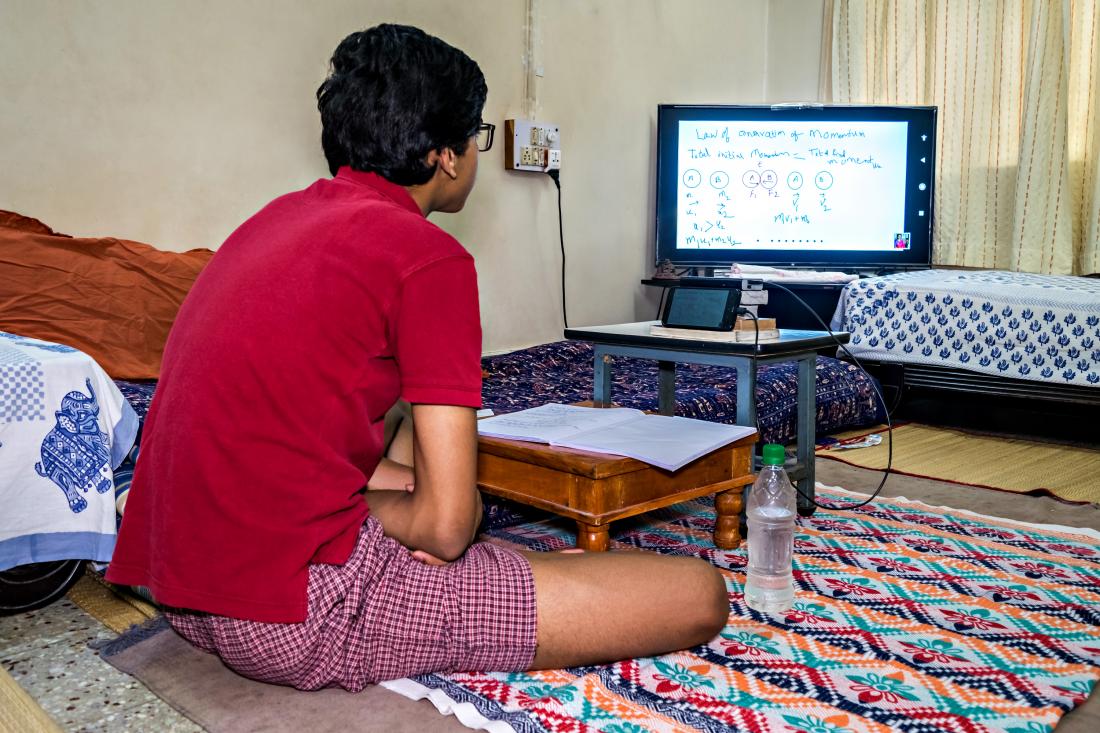Providing Post-Training Assistance to Young Jobseekers to Improve Employment Outcomes in India
- Job seekers
- Students
- Youth
- Earnings and income
- Employment
- Coaching and mentoring
- Digital and mobile
- Information
- Training
- Intergroup/social contact
- Online learning
To ensure that young jobseekers have the skills to meet an increasing demand for skilled labor, numerous skills training programs have been implemented nationwide by the government of India. However, recent studies suggest that the impact of skills training programs on youth labor outcomes may be limited. One reason for this may be that there are non-skill related barriers to finding work. Researchers are evaluating the impact of providing additional information and resources to those who have completed skills training programs on employment outcomes.
Policy issue
Globalization has provided firms with unprecedented access to global labor markets, and this has been associated with a rapid increase in demand for skilled labor. In 2020, an estimated 756 million individuals are of working age; and many countries are recognizing this unique opportunity to harness a young labor force to their economic advantage. As a result, numerous skill development programs have been initiated by governments to ensure that young jobseekers are prepared to meet the rising demand for skilled labor.
Despite the increasing prevalence of skills training programs, policy reports and studies suggest that they may have limited impact on youth outcomes. Youth may face other non-skill barriers, such as difficulties in knowing where to find work, which prevent them from finding employment. Skills development programs on their own may therefore not be sufficient in improving labor outcomes and additional information or resources may be needed to help jobseekers gain employment. Leveraging technology and remote interactions, examining the effectiveness of assistance delivery could shed light on the importance of providing comprehensive support to jobseekers, especially in the time of COVID-19 lockdowns. Can skills training programs combined with post-training livelihood assistance improve labor market outcomes for young jobseekers in India?
Context of the evaluation
India is considered one of the world’s fastest growing economies with a rapidly increasing demand for skilled labor. However, the World Bank estimates that only 2.3 percent of India’s workforce has received some formal skills training. 1 Although more than twelve million youth aged between 15 and 29 years are expected to enter India’s labor force in the next two decades, the lack of opportunities for skill development have impeded the supply of skilled workers to meet the rising demand. Survey results show that 56 percent of employers are finding it difficult to fill jobs in India. 2
To address this issue, non-profit organizations such as the Kherwadi Social Welfare Association (KSWA) have attempted to address the skills shortage by providing short duration training courses to young jobseekers who may have limited social mobility and economic opportunities. In particular, a movement set up by KSWA in the 1920s known as the Yuva Parivartan (YP) has launched numerous livelihood and skilling initiatives across eighteen states in India. These initiatives provide multiple vocational skill training programs as well as industry certified training, the curriculum of which vary depending on whether the training focuses on wage employment or self-employment.
Although participation in YP programs has been associated with higher wages, many jobseekers continue to report difficulties in finding work. Survey results suggest that YP graduates face initial difficulties in finding work and accessing the right information and resources to do so. They are also more likely to rely on their social networks in securing employment. Due to the coronavirus pandemic, the government instated a lockdown on March 25, 2020. While there are still restrictions regarding public transport and holding gatherings, the partial lifting of the lockdown restrictions began in Maharashtra on September 1, 2020, allowing the study to continue on a virtual basis.

Details of the intervention
Researchers are partnering with Yuva Parivartan (YP) to evaluate the impact of skills development programs combined with either group or individual post-training livelihood assistance on labor outcomes for young jobseekers. Researchers invited young jobseekers from villages in the peri-urban and rural areas of Maharashtra to participate in a three-month YP training program. Information about the training programs were marketed through road shows, demonstrations, and door-to-door visits, street plays along with distributed banners, pamphlets, and posters.
Among young jobseekers who expressed an interest in the program and had started completing the baseline survey prior to the COVID-19 lockdown, researchers selected 1,100 eligible candidates from 96 predefined groups of ten to fifteen trainees and randomly assigned them into four groups:
- Comparison group: (24 groups) YP WhatsApp group members received no training or assistance.
- Online training: (24 groups) WhatsApp group members received access to online training content, such as entrepreneurship development and work-readiness videos along with engagement activities.
- Online training + group assistance: (24 groups) In addition to access to online training materials, WhatsApp group members received access to wage employment and self-employment assistance from a YP livelihood coordinator. Interactions with the livelihood coordinator were conducted via group messages or calls.
- Online training + private assistance: In addition to access to online training materials, WhatsApp group members received one-on-one assistance from the YP livelihood coordinator. Interactions with the livelihood coordinator were conducted via individual messages or calls.
Over the course of three months, researchers provided the post-training assistance to both wage-employed and self-employed trainees through WhatsApp—a messaging application on smart phones—groups already managed by YP to facilitate information dissemination and peer-to-peer interaction.
A baseline phone survey was conducted before the start of the intervention in order to understand participants’ employment status before and during the COVID-19 lockdown and expectations for their livelihoods in the near future. A final survey will be conducted via phone 3 months after the intervention is completed in 2021.
Results and policy lessons
Study ongoing; results forthcoming.
Skilling India. World Bank Feature Story. June 23, 2017.
2018 Talent shortage survey, India. Manpower Group.